Organs and functions of the endocrine system. Endocrine System: Organs, Functions, and Hormones Explained
How does the endocrine system work in conjunction with the nervous system. What are the main glands and hormones in the endocrine system. How do neurotransmitters and hormones differ in their functions. What roles do specific hormones like adrenaline, cortisol, and oxytocin play in the body.
The Endocrine System: An Overview of Glands and Hormones
The endocrine system is a complex network of glands that secrete chemicals called hormones directly into the bloodstream. This system works in tandem with the nervous system to regulate various bodily functions, both short-term and long-term. The pituitary gland, often referred to as the “master” gland, plays a crucial role in activating other endocrine glands throughout the body.
Key Endocrine Glands
- Pituitary gland (in the brain)
- Thyroid gland (in the neck)
- Thymus (in the chest)
- Adrenal glands (near the kidneys)
- Pancreas (near the stomach)
- Gonads (ovaries in females, testes in males)
These glands work together to maintain homeostasis and regulate various bodily processes, including digestion, growth, and sexual development.
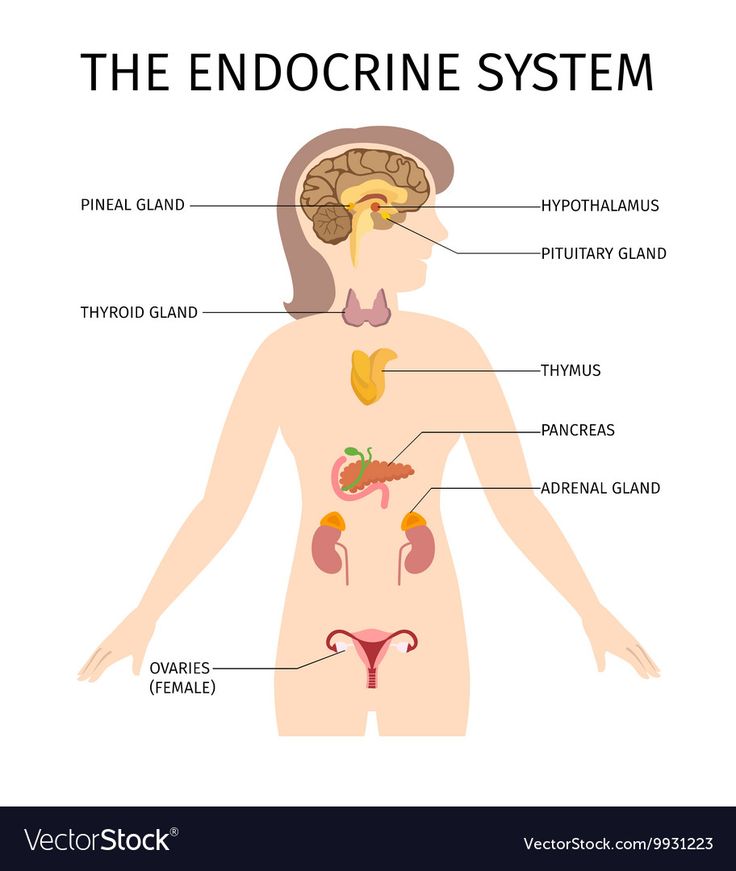
The Interplay Between the Nervous System and Endocrine System
The nervous system and endocrine system collaborate to send messages throughout the body. While neurons and neurotransmitters are the primary messengers of the nervous system, hormones serve as the chemical messengers of the endocrine system. This dual-system approach allows for both rapid and long-lasting responses to internal and external stimuli.
Neurotransmitters vs. Hormones: Speed and Reach
Are neurotransmitters faster than hormones? Indeed, they are. Neural signals travel in milliseconds, leading to rapid changes in the body. Hormones, on the other hand, work more slowly, with their effects taking seconds, minutes, or even hours to manifest. However, hormones have a broader reach within the body.
Neurotransmitters are released from neurons into synapses, where they bind to specific receptors on adjacent neurons. This system is akin to traveling by train, limited to existing tracks between two points. In contrast, hormones are released directly into the bloodstream, allowing them to travel throughout the body and affect multiple cells and organs simultaneously. This broader distribution is comparable to traveling by car, with the ability to reach numerous destinations via an extensive road network.

The Versatility of Chemical Messengers: Blurring the Lines
Interestingly, the distinction between hormones and neurotransmitters is not always clear-cut. Some hormones can function like neurotransmitters, and vice versa. For example, the hormones progesterone and estrogen can bind to specific receptors, mimicking the rapid effects of neurotransmitters. Conversely, neurotransmitters such as dopamine and serotonin can act as hormones, regulating the release of other hormones from the pituitary gland.
Adrenaline: The Body’s Emergency Response Hormone
Epinephrine, commonly known as adrenaline, is a hormone that plays a crucial role in the body’s “fight or flight” response. How does adrenaline prepare the body for immediate stress? It rapidly increases physiological arousal by:
- Elevating heart rate
- Raising blood pressure
- Boosting available energy
This quick response enables the body to react swiftly in high-stress situations, potentially improving chances of survival in dangerous circumstances.

Cortisol: The Long-Term Stress Management Hormone
Often referred to as the “stress hormone,” cortisol helps the body respond to stress over extended periods. What are the primary functions of cortisol in stress management?
- Regulating blood sugar levels to ensure adequate energy supply
- Reducing inflammation to protect the body from potential injury
- Suppressing non-essential processes such as digestion, reproduction, growth hormone production, and tissue repair
By modulating these functions, cortisol helps the body prioritize its resources during prolonged periods of stress, ensuring survival and adaptation to challenging environments.
Oxytocin: The Bonding Hormone
Oxytocin, often called the “bonding hormone,” plays a significant role in social and emotional connections. When is oxytocin released in the body? Levels of this hormone increase after various nurturing behaviors, including:
- Hugging a loved one
- Giving birth
- Engaging in sexual activity
One of the most fascinating aspects of oxytocin is its ability to create a reinforcing feedback loop. For instance, when a mother gazes into her baby’s eyes, both the mother’s and baby’s oxytocin levels rise. This mutual increase encourages continued eye contact, further elevating oxytocin levels and strengthening the mother-child bond. This positive cycle is crucial for social development and attachment formation.

The Endocrine System’s Role in Growth and Development
Beyond stress response and social bonding, the endocrine system plays a vital role in regulating growth and development throughout an individual’s lifespan. How does the endocrine system influence these processes?
Growth Hormone
The pituitary gland secretes growth hormone, which stimulates cell reproduction and regeneration. This hormone is particularly important during childhood and adolescence, promoting:
- Increase in height
- Muscle development
- Bone density improvement
In adults, growth hormone continues to play a role in maintaining muscle mass and bone density, as well as regulating metabolism.
Thyroid Hormones
The thyroid gland produces hormones that are crucial for proper growth and development. These hormones influence:
- Metabolism
- Brain development
- Bone growth
- Heart and digestive function
Imbalances in thyroid hormones can lead to various developmental issues, highlighting the importance of proper thyroid function throughout life.
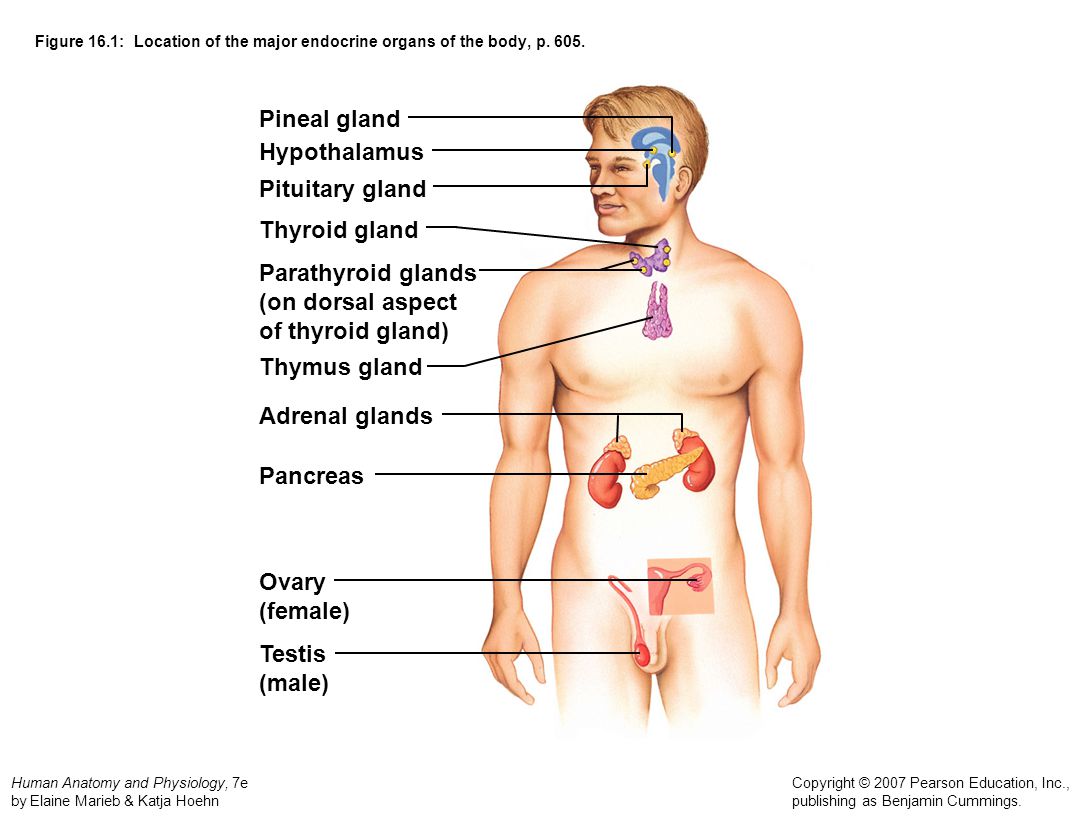
Sex Hormones
The gonads (ovaries in females and testes in males) produce sex hormones that are essential for sexual development and reproduction. These hormones, including estrogen, progesterone, and testosterone, regulate:
- Puberty onset
- Development of secondary sexual characteristics
- Reproductive cycles
- Fertility
The intricate balance of these hormones ensures proper sexual maturation and reproductive health.
Endocrine Disorders: When the System Malfunctions
While the endocrine system is remarkably efficient, various disorders can arise when glands produce too much or too little of specific hormones. What are some common endocrine disorders?
Diabetes
Diabetes is perhaps the most well-known endocrine disorder, characterized by the body’s inability to properly regulate blood sugar levels. There are two main types:
- Type 1 Diabetes: The pancreas produces little to no insulin
- Type 2 Diabetes: The body becomes resistant to insulin or doesn’t produce enough
Both types can lead to serious health complications if not properly managed.

Thyroid Disorders
Thyroid disorders occur when the thyroid gland produces too much (hyperthyroidism) or too little (hypothyroidism) thyroid hormone. Symptoms can include:
- Weight changes
- Fatigue
- Mood swings
- Changes in heart rate
Proper diagnosis and treatment are essential for managing these conditions and maintaining overall health.
Growth Hormone Deficiency
When the pituitary gland doesn’t produce enough growth hormone, it can lead to stunted growth in children and various health issues in adults. Treatment often involves hormone replacement therapy to restore proper growth and metabolic function.
The Future of Endocrine Research and Treatment
As our understanding of the endocrine system continues to evolve, new avenues for research and treatment are emerging. What are some promising areas of endocrine research?
Personalized Medicine
Advances in genetic testing and biomarker analysis are paving the way for more personalized approaches to endocrine disorders. This tailored approach may lead to more effective treatments with fewer side effects.

Hormone Replacement Therapies
Researchers are developing new methods for hormone replacement that more closely mimic the body’s natural hormone production and release patterns. These advancements could improve the efficacy of treatments for various endocrine disorders.
Endocrine Disruptors
Increasing awareness of environmental endocrine disruptors has sparked research into their long-term effects on human health. This research may lead to better regulations and strategies to minimize exposure to these harmful substances.
Neuroendocrine Interactions
Further exploration of the complex interactions between the nervous and endocrine systems may unlock new understanding of various physiological and psychological processes. This research could lead to novel treatments for conditions ranging from stress-related disorders to neurodegenerative diseases.
As we continue to unravel the complexities of the endocrine system, we gain valuable insights into human physiology and open new doors for medical advancements. The interplay between hormones, neurotransmitters, and various bodily systems highlights the intricate balance required for optimal health and well-being. By understanding these processes, we can develop more effective strategies for maintaining health, preventing disease, and treating endocrine disorders.

The endocrine system, with its network of glands and hormones, remains a fascinating area of study in biology and medicine. From the rapid-fire responses triggered by adrenaline to the long-term effects of growth hormone, each component of this system plays a crucial role in maintaining homeostasis and adapting to environmental challenges. As research progresses, we can expect even more exciting discoveries that will shape our understanding of human physiology and inform future medical treatments.
The Endocrine System: Organs and Functions
By Catherine A. Sanderson, Amherst College
The endocrine system is crucial for the working of the nervous system as it is used by the latter along with the neurons and neurotransmitters. The endocrine system is a collection of glands that secrete chemicals known as hormones into the bloodstream. The pituitary gland in the brain is usually considered the primary or ‘master’ endocrine gland because it releases hormones that activate the other endocrine glands.
Neurotransmitters are released from the neuron into the synapse, where they bind to specific receptors on the next neuron. (Image: Andrii Vodolazhskyi/Shutterstock)
Glands in the Endocrine System
Besides pituitary, other glands in the endocrine system include the thyroid (in the neck), the thymus (in the chest), the adrenal glands and pancreas (near the kidney and stomach), and the gonads (ovaries, testes).
The endocrine system helps maintain regular short-term bodily processes, such as digestion and elimination, as well as regulate long-term bodily processes, such as growth and the development of secondary sex characteristics at the time of puberty.
The endocrine system assumes significance in our body also because it is used by the nervous system along with the neurons and neurotransmitters to send messages. The endocrine system works as a second set of receiver for messages being sent by the nervous system throughout the body using hormones.
Neurotransmitters Versus Hormones
In order to understand this, we need to understand the difference between messages sent by the autonomic nervous system for breathing and by the endocrine system for something like digestion.
To begin with, neurotransmitters are faster; neural signals travel in milliseconds and lead to rapid changes. Hormones, on the other hand, work more slowly. Their effects can require seconds, minutes, or even hours to take place.
However, one of their limitation is their mobility. Neurotransmitters are released from the neuron into the synapse, where they bind to specific receptors on the next neuron. This system is like traveling on a train, where it can operate only if tracks exist between the two points.
This article comes directly from content in the video series Introduction to Psychology. Watch it now, on Wondrium.
Hormones
Hormones have no such limitation and can trigger different parts of the body to act. They are released from endocrine glands directly into the bloodstream, where they travel throughout the body and can deliver a message to all cells.
Thus, hormones are like traveling by car, where one can drive to many different destinations since there are far more roads than train tracks.
Hormones and neurotransmitters might sound like two totally different things but, interestingly, some hormones work like neurotransmitters and some neurotransmitters work in some ways like hormones. An example of this interchanging roles would be the hormones progesterone and estrogen. Both progesterone and estrogen can bind to specific receptors, just like neurotransmitters, leading to very fast effects.
Similarly, certain neurotransmitters, such as dopamine and serotonin, also work as hormones, regulating the release of various other hormones by the pituitary gland.
Adrenaline
Just like different neurotransmitters have different effects on the body, different hormones play a distinct role in how the body functions. Epinephrine, also known as adrenaline, is the hormone that increases physiological arousal, triggering the ‘fight or flight’ response.
It helps our entire body quickly prepare to respond in times of immediate stress by increasing heart rate, elevating blood pressure, and boosting available energy.
Cortisol
Cortisol, which is often described as the ‘stress hormone’, also helps the body respond to stress, but in a more sustained way, over a longer time frame. Cortisol controls blood sugar levels so the body has enough energy.
It also reduces inflammation, which protects the body in case of injury. And cortisol suppresses non-essential processes, such as digestion, reproduction, the production of growth hormone, and tissue repair.
Oxytocin
Another hormone that plays a very distinct role is Oxytocin. Levels of oxytocin, which is often referred to as the bonding hormone, climb after various types of nurturing behaviors: hugging a loved one, giving birth, having sex.
Oxytocin also creates a reinforcing feedback loop. When a mother stares into her baby’s eyes, the baby’s oxytocin levels rise, causing the baby to stare back into its mother’s eyes, which in turn causes the mother to release more oxytocin, and so on. This positive cycle helps create a strong mother-child bond, which is an essential part of social development.
Positive oxytocin feedback loop is also seen between pet owners and their dogs. (Image: Christin Lola/Shutterstock)
Although most research with young infants is conducted examining the mother-child bond, there’s no reason to assume the exact same positive oxytocin feedback loop doesn’t work with fathers and babies.
Oxytocin Feedback Loop and Pet Owners
An interesting finding is that this same type of positive oxytocin feedback loop is seen between pet owners and their dogs.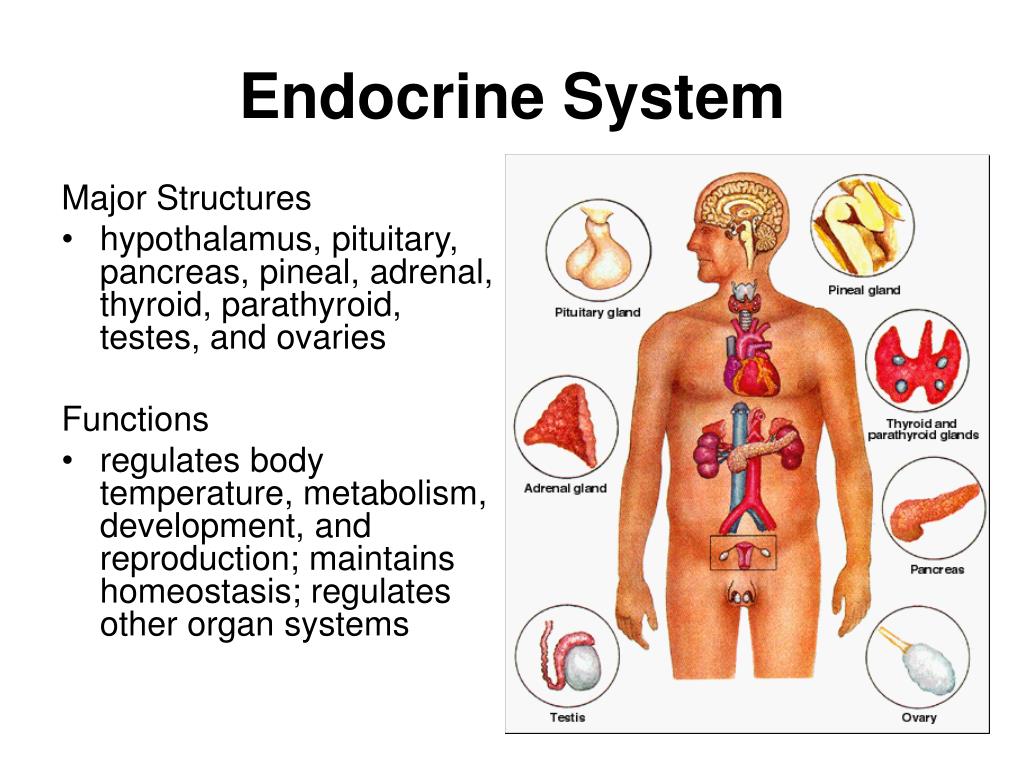 Researchers in one study brought in 30 pairs of owners and dogs and collected urine samples from both to measure oxytocin levels. They then asked the pet owners to interact with their dog alone in a room for 30 minutes.
Researchers in one study brought in 30 pairs of owners and dogs and collected urine samples from both to measure oxytocin levels. They then asked the pet owners to interact with their dog alone in a room for 30 minutes.
During this time, owners typically petted their dogs and talked to them; sometimes they also gazed into their dog’s eyes. The researchers then collected new urine samples to measure changes in oxytocin levels. Their findings were fascinating. Pairs that spent more time gazing into each other’s eyes showed a substantial increase in oxytocin for both people and dogs!
This discovery may help explain why service dogs can be useful for people with post-traumatic stress disorder.
Hormones and Behavior
These studies on the oxytocin feedback loop also illustrate a broader point: The link between hormones and behavior is bidirectional—hormones influence behavior, but behavior also influences hormones.
Thus, in conclusion, one can clearly observe the vital role hormones play in the working of the endocrine system. All its message-receiving ability rests upon the healthy hormone levels in our body. Only with the help of hormones can the endocrine system continue to works as a receiver for the messages being sent by the nervous system and, in turn, work as a unified system, complementing each other.
All its message-receiving ability rests upon the healthy hormone levels in our body. Only with the help of hormones can the endocrine system continue to works as a receiver for the messages being sent by the nervous system and, in turn, work as a unified system, complementing each other.
Common Questions about the Endocrine System
Q: Why is the pituitary gland considered the primary endocrine gland?
The pituitary gland in the brain is usually considered the primary or ‘master’ endocrine gland because it releases hormones that activate the other endocrine glands.
Q: What does the endocrine system do?
The endocrine system helps maintain regular short-term bodily processes, such as digestion and elimination, as well as regulate long-term bodily processes, such as growth and the development of secondary sex characteristics at the time of puberty.
Q: Which hormone triggers the ‘fight or flight’ response?
The hormone epinephrine, also known as adrenaline, is the hormone that increases physiological arousal, triggering the ‘fight or flight’ response.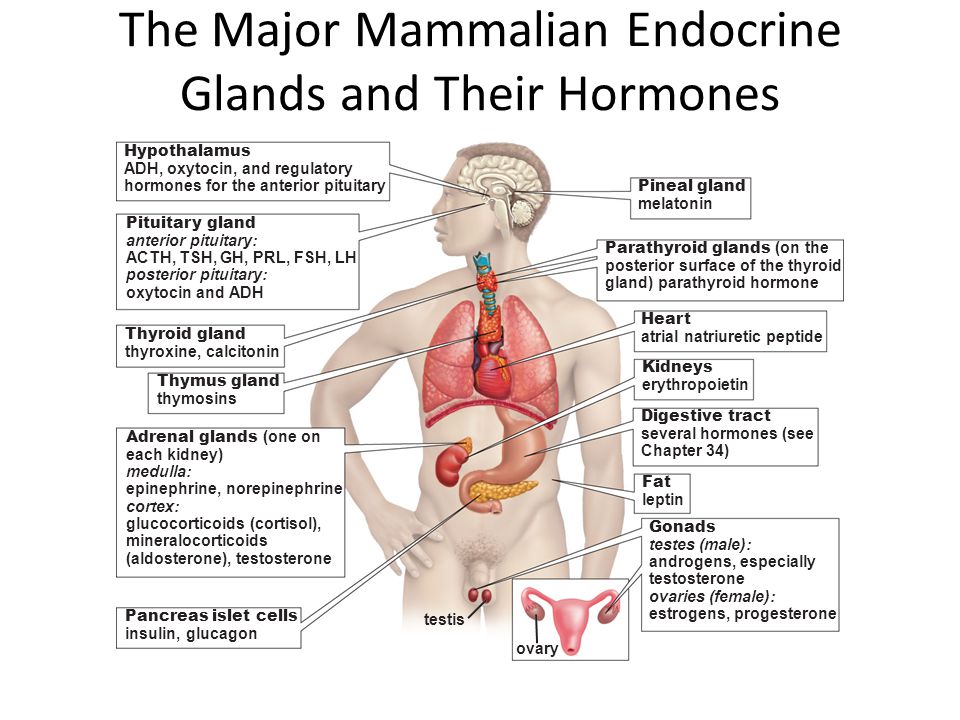
Keep Reading
PEA, Oxytocin, and other Chemicals of Passionate Love
Origin of Stress Shown to Be Hippocampus Linked to Neural Networks in the Brain
Snacking Disrupts Biological Clock, Dopamine Levels, Scientists Say
Anatomy of the Endocrine System
Health Library Explorer
Search Library:
Browse A-Z Listings:ABCDEFGHIJKLMNOPQRSTUVWXYZA-Z ListingsContact Us
The endocrine system is a complex network of glands and organs. It uses hormones to control and coordinate your body’s metabolism, energy level, reproduction, growth and development, and response to injury, stress, and mood. The following are key parts of the endocrine system:
-
Hypothalamus. The hypothalamus is located at the base of the brain. It makes hormones that control hormones released in the pituitary gland. The hypothalamus controls water balance, sleep, temperature, appetite, mood, reproductive behaviors, and blood pressure.

-
Pineal gland. This gland is located in the middle of the brain. It makes the hormone melatonin. This hormone helps your body know when it’s time to sleep. This hormone also regulates the timing of other functions throughout the body, such as when puberty starts.
-
Pituitary gland. This gland is located below the brain. It is often as small as a pea. But it controls many functions of the other endocrine glands.
-
Thyroid and parathyroid. These glands are located in front of the neck, below the voice box (larynx). The thyroid plays a key role in the body’s metabolism. The parathyroid helps regulate the body’s calcium balance and bone strength.
-
Adrenal gland. An adrenal gland is located on top of each kidney. Like many glands, these work together with the hypothalamus and pituitary gland.
 The adrenal glands make and release corticosteroid hormones and adrenaline (epinephrine). These maintain blood pressure and regulate metabolism.
The adrenal glands make and release corticosteroid hormones and adrenaline (epinephrine). These maintain blood pressure and regulate metabolism. -
Pancreas. This organ is located across the back of the belly (abdomen), behind the stomach. It plays a role in digestion and hormone production. Hormones made by the pancreas include insulin and glucagon. These regulate blood sugar levels.
-
Ovaries. A woman’s ovaries are located on both sides of the uterus, below the opening of the fallopian tubes. The ovaries contain the egg cells needed for reproduction. They also make estrogen and progesterone.
-
Testes. A man’s testes are located in a pouch that hangs suspended outside the male body. The testes make testosterone and sperm.
Online Medical Reviewer:
Raymond Kent Turley BSN MSN RN
Online Medical Reviewer:
Rita Sather RN
Online Medical Reviewer:
Robert Hurd MD
Date Last Reviewed:
4/1/2022
© 2000-2023 The StayWell Company, LLC. All rights reserved. This information is not intended as a substitute for professional medical care. Always follow your healthcare professional’s instructions.
All rights reserved. This information is not intended as a substitute for professional medical care. Always follow your healthcare professional’s instructions.
Powered by STAYWELL
Copyright ©
The StayWell Company, LLC. except where otherwise noted.
StayWell Disclaimer
Structure of the endocrine system Pathologies of the neuroendocrine system
- Main
- Analyzes
- Directory of Diseases
- Organization and pathology of the endocrine system
Endocrine (neuroendocrine) function performs the regulatory activity of internal organs with the help of biologically active substances – hormones, which, released by endocrine structures, enter the bloodstream or pass into nearby cells.
General concept and characteristics of the endocrine system
Thanks to the endocrine function, many internal organs are controlled and regulated. In addition, the body’s adaptation to periodic changes in the external environment is ensured, while maintaining a normal balance of homeostasis to ensure a healthy and natural human existence.
In addition, the body’s adaptation to periodic changes in the external environment is ensured, while maintaining a normal balance of homeostasis to ensure a healthy and natural human existence.
Neuroendocrine function is of the following categories:
- Glandular . Produces glandular elements.
- Diffuse . Endocrine biological elements are localized throughout the body and produce hormones called aglandular.
Structural and functional organization of the endocrine system
Some glands (genital and pancreas) are joint, that is, they produce exogenous and endogenous secretion.
It is also worth noting that certain organs can produce certain hormones to some extent. For example, the kidneys release renin , prostaglandin, erythropoietin, and the atrium is atrial natriuretic peptide.
The diffuse endocrine system also plays a large role in the production of essential hormones. Thus, neuropeptides produced by the central and peripheral nervous system regulate all important physiological functions of the human body. It is also worth mentioning the gastropancreatic endocrine system, which produces biological (signal) elements.
Thus, neuropeptides produced by the central and peripheral nervous system regulate all important physiological functions of the human body. It is also worth mentioning the gastropancreatic endocrine system, which produces biological (signal) elements.
Pathologies of the endocrine system and their characteristics
Endocrine pathologies are diseases caused by dysfunction of one or more endocrine glands.
I. Violation of the combined structures of the pituitary and hypothalamus
- Acromegaly . The disease is associated with increased production of somatotropic hormone (growth).
- Itsenko-Cushing pathology . Pathology is characterized by an increase in the production of biological substances by the adrenal glands, which leads to hyperplasia of the pituitary tissue or the appearance of compaction in it.
- Prolactinoma . Benign education, manifested most often in women.

- Hyperprolactinemia . An increase in the concentration of the hormone prolactin in the bloodstream.
- Diabetes insipidus . Polyuria (urine excretion – up to 8-15 liters per day) and polydepsia (heavy drinking).
II. Thyroid dysfunction
- Hyperthyroidism . Overproduction thyroxine (T4) and triiodothyronine (T3).
- Hypothyroidism. Decreased thyroxine (T4) and triiodothyronine (T3).
- Diffuse toxic goiter . Excessive secretion of thyroid hormones, which leads to thyrotoxicosis.
- Thyrotoxic neoplasm . The presence of a benign tumor in the thyroid gland leads to an increase in the level of thyroid hormones.
III. Diseases of the pancreas
- Diabetes mellitus . Insufficient production of the hormone insulin, which leads to an increase in sugar in the bloodstream.

- Adrenal hormonal tumor . Benign or malignant growth of atypical structures of the adrenal glands.
IV. Pathological changes in the adrenal glands
- Chronic adrenal insufficiency . Decreased glucocorticoid and mineralocorticoid function of the adrenal glands.
- Primary hyperaldosteronism . It develops as a result of excessive release of aldosterone .
V. Diseases of the gonads (in women)
- Premenstrual syndrome . Occurs in premenstrual days (2-8 days before menstruation).
- Pathological changes in menstrual function . Change in the rhythm and nature of normal menstruation.
- Stein-Leventhal Syndrome . Dysfunction of the ovaries (absence of menstruation or irregular cycle, increased androgens and estrogens in the blood).

Despite the fact that the endocrine system is well studied, scientists still have many unsolved questions. We hope that soon humanity will learn many new facts about the functional organization, as well as find out the causes of hormonal disorders.
Where to submit?
Analyzes
at homeResults of
testsUnique
analyzes
Female hormones | Hormonal treatment for women in SM-Clinic
Hormones are a specific class of organic substances that are produced by the endocrine system of our body.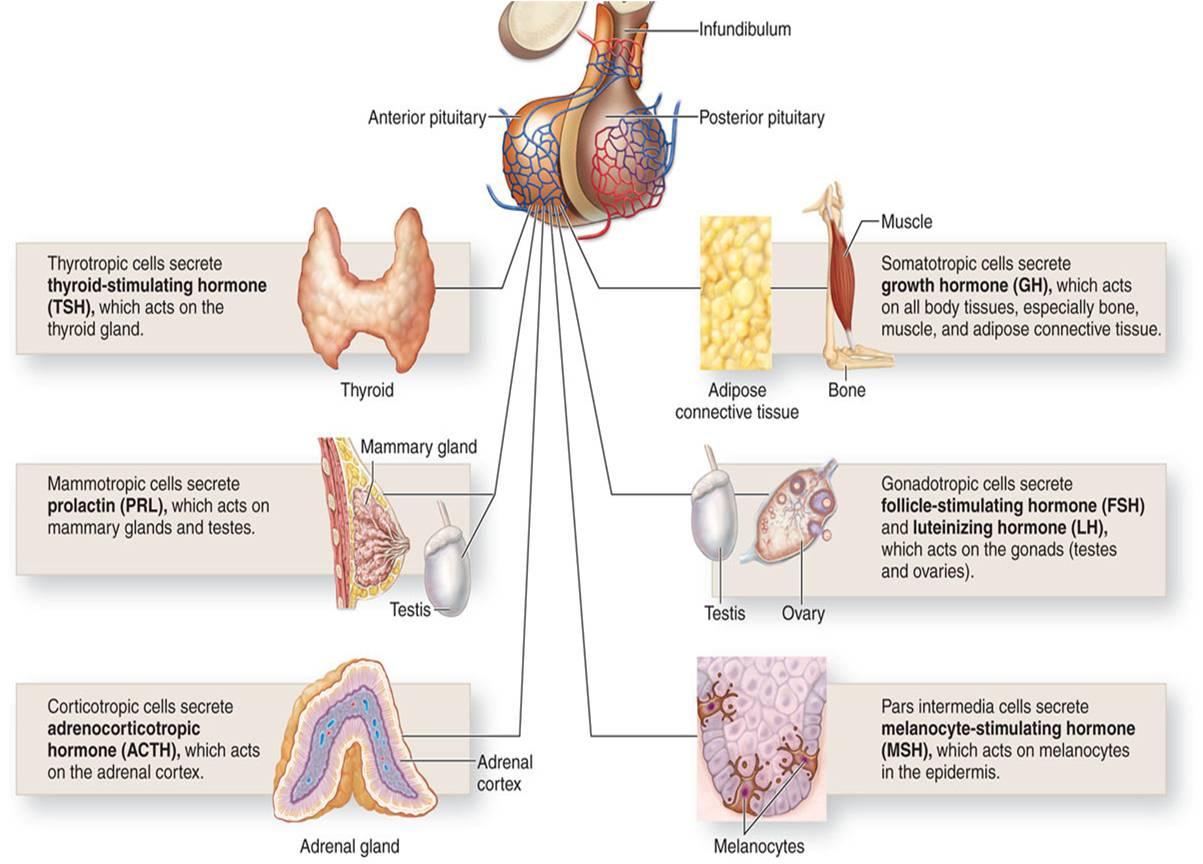 The function of hormones in the body is primarily regulatory. From the endocrine glands, these substances enter the bloodstream, and then bind to receptors located on the surface of target cells, thereby affecting the metabolic and functional activity of these cells.
The function of hormones in the body is primarily regulatory. From the endocrine glands, these substances enter the bloodstream, and then bind to receptors located on the surface of target cells, thereby affecting the metabolic and functional activity of these cells.
Hormones also play an important role in the regulation of reproductive function. From this point of view, the health of a woman is much stronger than that of a man depends on the content of certain hormones in the blood. They are responsible not only for puberty, but also for the correct passage of all menstrual cycles and the onset of menopause. Finally, the main female function from the point of view of biology and evolution – childbearing, also directly depends on the concentration of certain hormones. And without the right balance of these substances, pregnancy is almost impossible.
Main sex hormones in women
All their diversity can be divided into two large groups:
- estrogens;
- progestogens.

Estrogens are female hormones that are necessary for the feminization of the body, that is, for the development and functioning of the human body according to the female type. They are produced mainly by ovarian follicles. Therefore, the concentration of these substances in girls increases greatly with the onset of puberty, when the ovaries are activated and the first menstruation appears. From this moment until the onset of menopause, the alternation of the phases of the menstrual cycle in a woman’s body will be regulated by estrogens.
In addition to affecting sexual and reproductive functions, estrogens have a number of other effects on the body:
- suppress degenerative processes in bone tissue;
- are involved in the synthesis of some proteins;
- contribute to the maintenance of normal blood clotting;
- have an anti-atherosclerotic effect, lowering the level of cholesterol in the blood.
The action of hormones progestogens, primarily progesterone, is the regulation of both the course of pregnancy and the very possibility of conception. These compounds are responsible for preparing the inner surface of the uterus for the implantation of a fertilized egg, as well as for the further development of the endometrium in the event of a successful pregnancy. Another function of this class of substances is the correct formation of the mammary gland in girls.
These compounds are responsible for preparing the inner surface of the uterus for the implantation of a fertilized egg, as well as for the further development of the endometrium in the event of a successful pregnancy. Another function of this class of substances is the correct formation of the mammary gland in girls.
Reduced levels of the hormone progesterone reduce the likelihood of becoming pregnant and successfully bearing a child. In addition, its insufficiency is explained by painful sensations during menstruation, as well as a complex of emotional and physiological fluctuations, called premenstrual syndrome.
When to see a doctor
Hormonal regulation is an extremely complex, subtle and multicomponent mechanism. All these biologically active substances bind different systems of the body together, affect not only their target cells, but also other organs and tissues, and also enhance or suppress each other’s action. That is why, for example, often in the diagnosis of reproductive problems women are required to donate blood for thyroid hormone tests .
If a health problem is caused by a violation of the hormonal balance, then only a certified doctor can figure it out, find a “weak link” and point action to correct the violation. The fact that self-medication can be not only ineffective, but simply dangerous, has long been known. And in the case of endocrine diseases, this statement is triple true – unprofessional intervention in the hormonal sphere can have disastrous consequences for health.
The medical assistance of qualified specialists of the SM-Clinic is the best option for solving any hormonal problems. At the same time, you need to remember that the sooner you contact our clinic, the sooner the correct diagnosis will be established. And early diagnosis is the most important factor in the success of treatment and minimizing the risk of complications.
What pathologies can affect the reproductive function of a woman
1. Disorders of the endocrine system.
First of all, this, of course, is the pathology of the reproductive organs, in particular, the ovaries.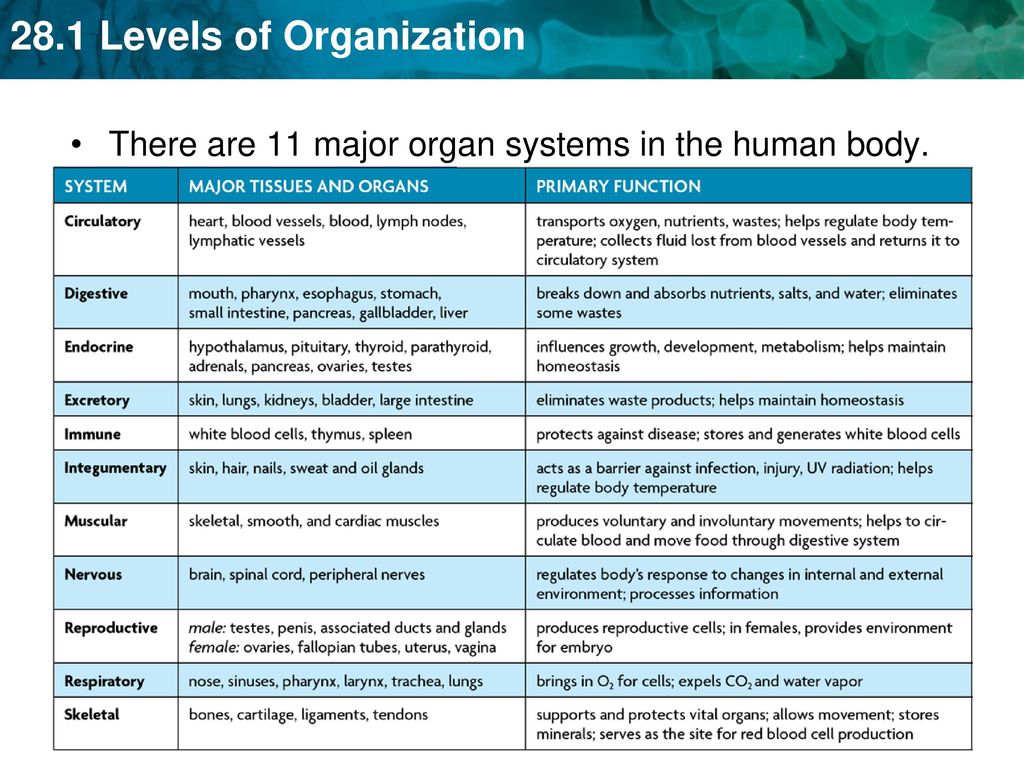 A very common disease is the formation of numerous cysts in them – small cavities filled with mucous contents. Polycystic ovary syndrome is a complex disorder that, in addition to difficulties with the onset and bearing of pregnancy, manifests itself:
A very common disease is the formation of numerous cysts in them – small cavities filled with mucous contents. Polycystic ovary syndrome is a complex disorder that, in addition to difficulties with the onset and bearing of pregnancy, manifests itself:
- irregular rare menses or even their cessation;
- pain in the lower abdomen;
- male pattern hair;
- obese;
- acne;
- depressions or neuroses.
In addition, reproductive function is influenced by hormones that are produced in other, non-gonadal endocrine glands:
- pituitary;
- thyroid;
- adrenal glands, etc.
Any pathology of these organs can lead to a violation of the hormonal balance, ranging from minor inflammation to serious tumor neoplasms, in which the production of hormones increases or, conversely, decreases.
2. Diabetes mellitus.
This disease also refers to disorders of the organs of the endocrine system (in particular, the pancreas). But due to the widespread, severe, chronic nature of the course and the impact on all body systems without exception, it should be moved to a separate section. This pathology negatively affects the possibility of conception, and also seriously complicates the bearing of a child. Therefore, a woman with diabetes mellitus throughout pregnancy should be under the close supervision of both a gynecologist and an endocrinologist.
But due to the widespread, severe, chronic nature of the course and the impact on all body systems without exception, it should be moved to a separate section. This pathology negatively affects the possibility of conception, and also seriously complicates the bearing of a child. Therefore, a woman with diabetes mellitus throughout pregnancy should be under the close supervision of both a gynecologist and an endocrinologist.
In addition, lack of estrogen serves as a provoking factor in the development of type 2 diabetes. This is one of the reasons for the increase in the incidence among women entering the postmenopausal period, when the concentration of these hormones in the blood decreases sharply. Scientists today consider estrogen replacement therapy as one of the effective measures for the prevention of diabetes in older women.
3. Changes in body weight.
The amount of adipose tissue in the body and the balance of sex hormones (primarily estrogens) are inextricably linked. This relationship is very complex and diverse, it is influenced by so many external factors that it is impossible to say unequivocally that, for example, increased estrogen in women leads to obesity or vice versa. In such a situation, SM-Clinic doctors carefully examine all the features of each specific case, using their knowledge and rich practical experience.
This relationship is very complex and diverse, it is influenced by so many external factors that it is impossible to say unequivocally that, for example, increased estrogen in women leads to obesity or vice versa. In such a situation, SM-Clinic doctors carefully examine all the features of each specific case, using their knowledge and rich practical experience.
There is no doubt only that with excessive weight loss and overweight, the reproductive function of a woman suffers:
- irregular menstruation;
- the number of ovulations decreases;
- the endometrium does not develop properly;
- increases the risk of complications and miscarriage;
- increases the likelihood of malignant changes in the genitals or mammary glands.
Therefore, the most important factor in the successful conception, bearing and birth of a child is the normalization of body weight. To do this, the specialists of our clinic without fail recommend specially designed programs, including individually selected diets, physiotherapy and medication.
4. Endocrine changes in menopause.
Menopause is a natural period in a woman’s life associated with the extinction of her sexual functions and the ability to bear children. This is a rather long period of time, the peak of which falls on average at the age of about 50 years. Menopause is characterized by a whole range of anatomical, metabolic, physiological and psychological changes, most of which, unfortunately, have a negative impact on a woman’s well-being.
At the same time, the leading cause of such changes is a sharp decrease in the level of sex hormones. That is why, since the middle of the last century, hormone replacement therapy has been widely used, which includes maintenance doses of estrogen and progesterone. Its purpose makes it possible to largely smooth out the negative manifestations of menopause, partially slow down age-related changes and even reduce the risk of malignant neoplasms of the mammary glands and the reproductive system.


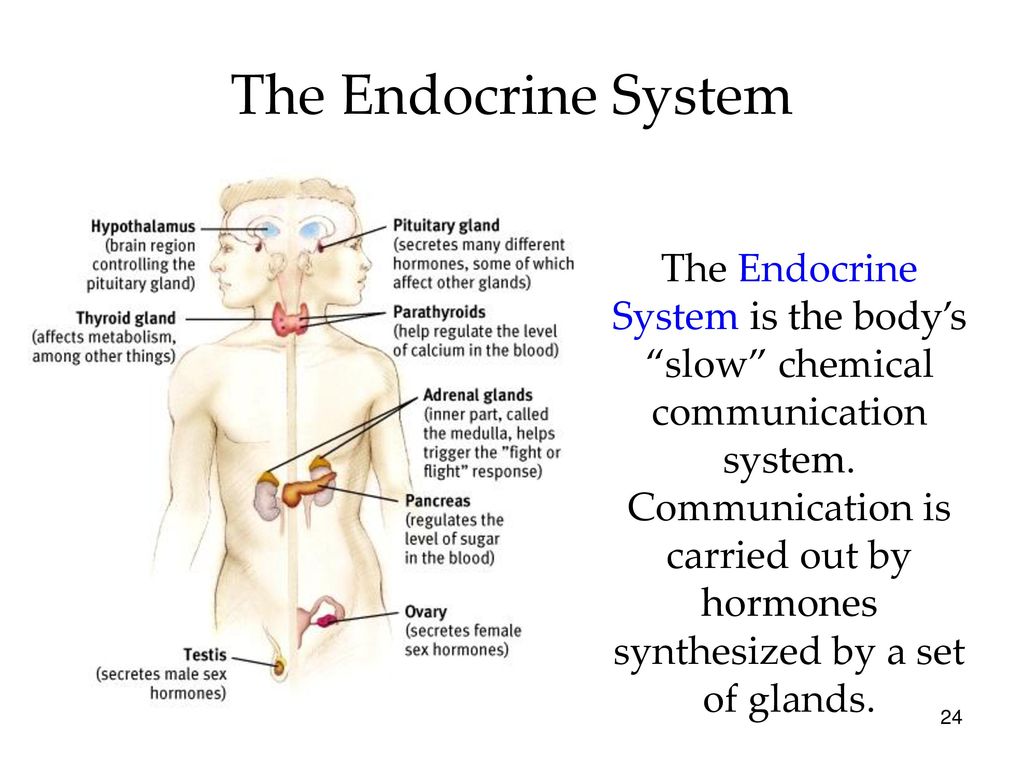 The adrenal glands make and release corticosteroid hormones and adrenaline (epinephrine). These maintain blood pressure and regulate metabolism.
The adrenal glands make and release corticosteroid hormones and adrenaline (epinephrine). These maintain blood pressure and regulate metabolism.


